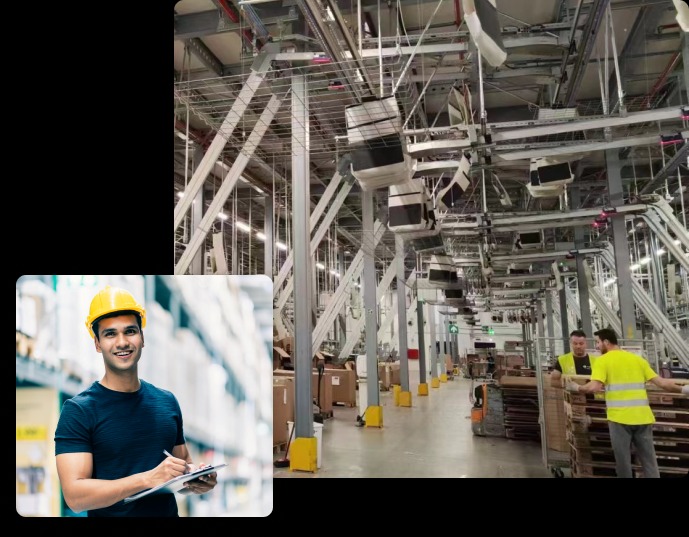In today's fast-paced global economy, the efficiency of supply chain management can make or break a business. Traditional logistics processes are increasingly unable to keep up with the demands of modern commerce. Enter automated logistics solutions – a transformative approach leveraging cutting-edge technology to streamline operations, enhance productivity, and drive down costs. This comprehensive exploration delves into the intricate workings of automated logistics solutions, their benefits, challenges, and the future they herald for businesses worldwide.
Chapter 1: Understanding Automated Logistics
Automated logistics solutions encompass a wide array of technologies and systems designed to automate various aspects of the supply chain. From warehouse automation utilizing robotics and automated guided vehicles (AGVs) to sophisticated inventory management systems powered by artificial intelligence (AI) and machine learning, these solutions span the entire logistics continuum. The primary objective is to minimize human intervention, optimize processes, and ensure seamless movement of goods from point of origin to final destination.
Chapter 2: The Key Components of Automated Logistics
- Robotics and Automation: Robotic arms and automated machinery are revolutionizing warehouse operations by executing tasks such as picking, packing, and palletizing with unmatched speed and precision.
- AGVs and Drones: Automated guided vehicles and drones are reshaping material handling and transportation, navigating warehouses and distribution centers autonomously, and even delivering packages directly to customers' doorsteps.
- AI-Powered Predictive Analytics: Advanced algorithms analyze vast amounts of data to forecast demand, optimize inventory levels, and anticipate potential disruptions, enabling proactive decision-making and mitigating risks.
- IoT-enabled Tracking and Tracing: Internet of Things (IoT) devices equipped with sensors monitor the movement and condition of goods in real-time, providing stakeholders with unprecedented visibility and control over their supply chain.
Chapter 3: Benefits of Automated Logistics Solutions
- Enhanced Efficiency: Automation minimizes manual errors, accelerates processes, and maximizes throughput, resulting in greater operational efficiency and reduced lead times.
- Cost Savings: By streamlining operations and optimizing resource utilization, automated logistics solutions help businesses lower labor costs, minimize inventory holding expenses, and optimize transportation expenditures.
- Improved Accuracy and Reliability: Automation eliminates human variability, ensuring consistent quality and reliability in tasks such as picking, sorting, and inventory management.
- Scalability and Flexibility: Modular automation solutions can be easily scaled up or down to accommodate fluctuating demand and evolving business needs, providing unparalleled agility and responsiveness.
Chapter 4: Overcoming Challenges in Implementation
- Initial Investment: The upfront costs associated with implementing automated logistics solutions can be substantial, requiring careful financial planning and justification.
- Integration Complexity: Integrating disparate systems and technologies into a cohesive automated ecosystem poses significant technical challenges, necessitating robust interoperability and compatibility standards.
- Workforce Transition: Automation inevitably impacts the workforce, requiring reskilling and retraining initiatives to ensure a smooth transition and minimize job displacement.
- Cybersecurity Risks: With increased reliance on interconnected systems and data-driven processes, cybersecurity threats loom large, necessitating robust measures to safeguard sensitive information and critical infrastructure.
Chapter 5: The Future of Automated Logistics
- Further Advancements in Robotics and AI: Continued innovation in robotics, artificial intelligence, and machine learning will unlock new possibilities for automation in logistics, driving even greater efficiencies and capabilities.
- Expansion of Autonomous Vehicles: Autonomous vehicles, both on the road and in the air, will play an increasingly pivotal role in last-mile delivery and intra-warehouse transportation, reshaping the logistics landscape.
- Ecosystem Integration: Seamless integration of automated logistics solutions with other emerging technologies such as blockchain and 5G will enable end-to-end visibility, transparency, and traceability across the supply chain.
- Sustainability Imperative: Automation presents an opportunity to optimize resource utilization, minimize waste, and reduce carbon footprint, aligning with the growing emphasis on sustainability in logistics and supply chain management.
Conclusion:
Automated logistics solutions represent the vanguard of supply chain innovation, offering unparalleled efficiency, scalability, and agility in an increasingly complex and competitive business environment. While challenges abound, the transformative potential of automation is undeniable, promising to reshape the logistics landscape and empower businesses to thrive in the digital age. As we journey into the future, embracing automation will not only be a strategic imperative but a prerequisite for success in the dynamic world of commerce. Visit the official website of rainbow-dynamics.com

